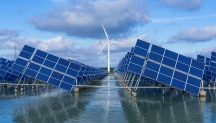

Accurate information for decision-makers from IRENA’s Power Sector Costing Study
Newsletter
A presentation on IRENA’s Power Sector Costing Study was made to interested delegates as part of the agency’s Second Assembly, which concluded today (Jan 15) in Abu Dhabi.
The Costing Study, which is designed to assist governments, recognises that although economics are a key decision factor, the cost of renewable energy has declined rapidly in recent years and decision-making is often either based on outdated numbers, or on figures which are not accurate and have been coloured by the opinion of the author. Costs also vary by project, country and over time
The completed study, which will be complemented with an assessment of benefits that allows cost/benefit analysis, will help IRENA become a trusted source for objective data that enable cost comparisons.
Information for the study is being gathered from a variety of sources including business journals, business journals, consultancies, auctions and tenders as well as project design studies. A questionnaire, to be initially conducted in 12 countries and sampling 10 projects from each, is also being used to collect actual project data.
The presentation began with a review of the levellised cost of electricity in Africa and the Pacific Region before considering cost data for technologies such as solar PV, solar CSP, onshore wind, hydro and biomass. It finished with an update on the progress of the questionnaire and an analysis of its initial findings.
IRENA’s Dolf Gielen, who gave the presentation, said that the costing study had already yielded several important overall insights including the fact that while price data are readily available, cost data are less so and the two are often mixed up even though trends may differ. He said there had been rapid cost and price reductions for solar PV, but less so for CSP, and although for some years there had been a price increase for wind, the cost of this technology was declining again. Further significant cost reductions could be expected in the coming years for all three technologies.




